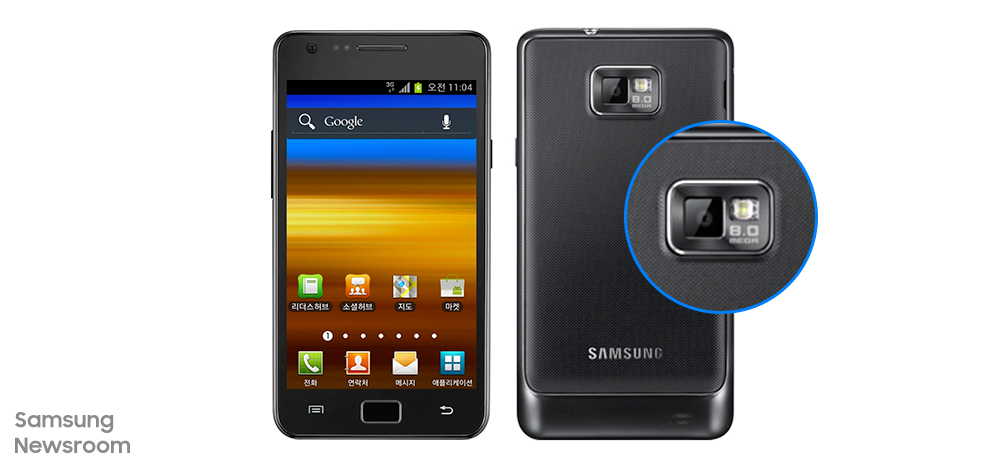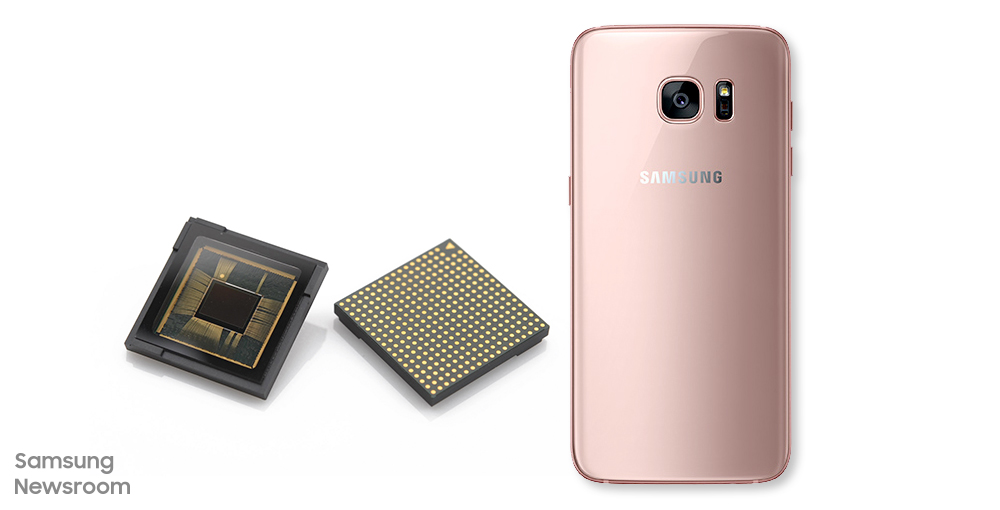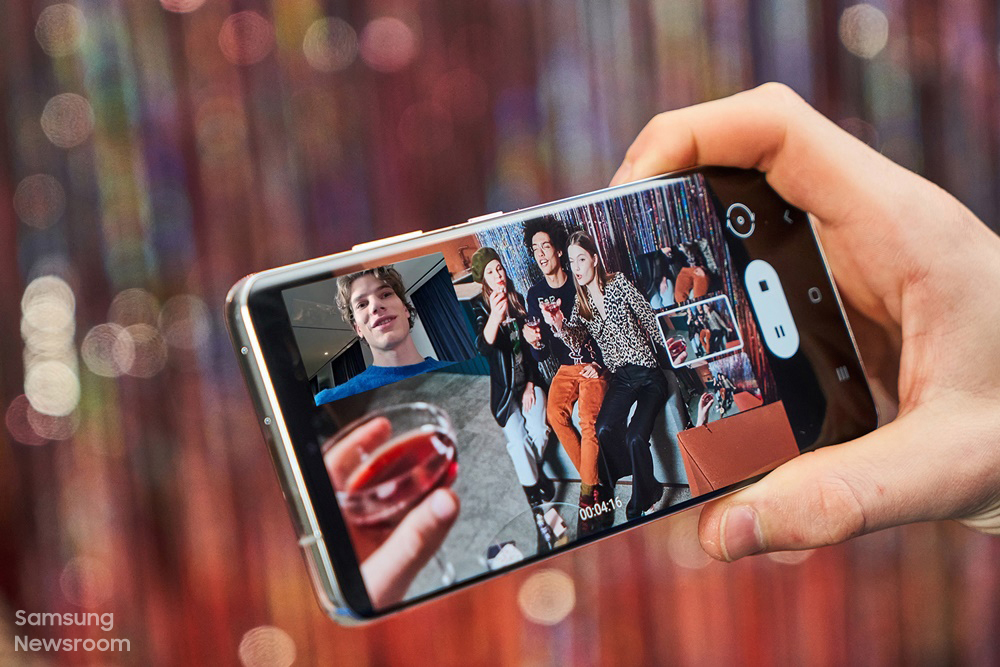
These days, when it comes to capturing precious moments, spectacular weather, or a delicious dish, a smartphone camera is an absolute necessity. It should come as no surprise that, according to a Samsung survey, an overwhelming number of consumers rank the camera and camera-related features among the top three factors that matter most when buying a new smartphone. The camera’s importance has been amplified as social media platforms have grown more popular, and as more smartphone users have begun to create their own content.
Since releasing its first camera phone, the SCH-V200, in 2000, Samsung has remained a leader in the industry by relentlessly advancing the camera phone segment. The Galaxy S series’ innovative cameras are the culmination of years of experience developing groundbreaking technologies. Follow along as we explore just how much the series’ cameras have evolved over the last 11 years – from the launch of the very first Galaxy S in 2010, all the way up to the recently introduced Galaxy S21.


The first Galaxy S device featured a VGA-class front camera that was capable of making video calls, as well as a 5-megapixel (MP) rear camera that could record HD videos. The rear camera also included built-in autofocus, facial recognition and anti-shake functions, and featured a Panorama Shot mode, which allowed users to capture an image of a scene that was much wider than what they saw on their screen.


Introduced a year after the Galaxy S, the Galaxy S2 featured a thoroughly enhanced camera. Included among the upgrades were boosts in pixel counts – 2 megapixels in the front and 8 megapixels in the rear – and an LED flash to facilitate night shots. Other fun additions included an improved autofocus feature, which made it easier to focus the camera on a desired subject, and a cartoon-inspired feature that transformed photos into hand-drawn images.


Introduced with 2012’s Galaxy S3, Burst Shot offered users the perfect tool for capturing blink-and-you’ll-miss-it moments like fun jump-in-the-air shots. Both the 1.9MP front camera and the 8MP rear camera supported the mode, which allowed users to take up to 20 pictures in the space of 3.3 seconds. The cameras also featured a Best Photo mode, which helped users select the best photo out of eight continuous shots, and a Zero Shutter Lag mode, which guaranteed that there would be no delay between the moment the user tapped the shutter button and the picture was produced.


The Galaxy S4 ushered in the era of 10-plus megapixel cameras by combining a 2MP front camera with a 13MP rear camera. The smartphone also introduced features that changed how users captured special moments, and in doing so, transformed their pictures into stories. For example, the camera’s Dual Shot mode allowed users to capture images with both cameras at the same time, producing a photo in which the photographer and the subject occupied the same frame. Other features unique to the Galaxy S4’s camera experience included Sound & Shot, which allowed users to record audio to accompany their images, and Drama Shot, which let users take multiple pictures in quick succession and combine them into an image that tells the story better than a single photo could.


The Galaxy S5 was a landmark release, as it was the first smartphone in the industry to feature a 16MP ISOCELL camera. The ISOCELL image sensor enhanced image quality with less cross-pixel interference, making it possible to take clearer pictures even in the dark. The camera also featured an upgraded HDR mode for enhancing photos. When taking pictures or recording videos, applying the HDR feature allowed users to enjoy vibrant images even in dimly lit rooms or environments with heavy backlighting.


To make it easier for smartphone users to capture more moments, Samsung introduced a Quick Launch function with the Galaxy S6 that allowed users to launch the camera in just 0.7 seconds, simply by tapping the home button twice on any screen. A function that automatically tracked and focused on moving objects enhanced image sharpness, while a 5MP F1.9 lens was installed on the front to boost selfie quality.


The Galaxy S7 incorporated a dual pixel image sensor – a technology featured in high-end DSLR cameras – to allow users to quickly snap crisp and clear photos even when they’re in the dark. The sensor worked by splitting every pixel into two photodiodes for on-chip phase detection, providing vastly improved autofocus performance. The camera also introduced a selfie flash mode, which would cause the screen to flash when taking a selfie to produce a brighter shot. Together, the Galaxy S7’s camera innovations achieved a then-record DxOMark Mobile Score of 88 points.


A perfect photo requires proper lighting and minimal movement from your subject. Unfortunately, while those may be the perfect conditions, they’re also conditions that we rarely find ourselves in when taking a shot.
To help users snap better photos, the Galaxy S8 introduced an improved image signal process algorithm that ensured clear, stable images regardless of time or place. It achieved this by taking three consecutive photos and selecting the best one. Because the device’s large, 6.2-inch1 display could prove difficult for some to manage with one hand, gesture-based controls were also introduced to help users operate the camera. For example, with the camera open, swiping left or right with your thumb would toggle filters or modes, while swiping up or down would allow you to switch between the front and rear cameras or zoom in or out.


To help ensure that users’ photos would come out well in various environments, the Galaxy S9 introduced a Dual Aperture camera that would automatically adjust to ambient light just like the human eye – widening in the dark and shrinking in bright light. The camera featured the brightest F1.5/F2.4 lens available in a smartphone at the time, which allowed it to absorb approximately 28 percent more light than the previous model, resulting in clearer pictures even in dark settings.
Samsung also enhanced the camera with functions designed to help users express themselves more effectively. The camera’s Super Slow-mo feature allowed users to record videos at 960 frames per second, making it possible to capture movements or moments that are too fast for the human eye to see. Once they finished recording, the function made it easy for users to share these epic slow-mo moments as GIFs on social media. Another notable addition was AR Emoji – a function that utilized the camera and augmented reality technology to allow users to create AR avatars that could mimic their facial expressions in real time.


By the time the Galaxy S10 was released in 2019, smartphone users were creating more content than ever before. To cater to this trend, the Galaxy S10 introduced Super Steady mode. The function greatly enhanced the quality of users’ recordings through video stabilization, making it perfect for recording smooth content when enjoying activities like cycling and dancing. The Galaxy S10’s HDR10+ support produced true-to-life colors in users’ videos, while its 16MP Ultra Wide Camera captured scenes as users saw them with a field of view that was similar to the human eye (123 degrees).


The Galaxy S20’s outstanding performance raised the bar for smartphone photography. Both the Galaxy S20 Ultra’s 108MP camera, as well as the 64MP shooter equipping the Galaxy S20 and S20+, were designed to capture each and every detail in a given scene.
Perhaps the most eye-catching camera enhancement was the Space Zoom function, which paired Hybrid Optic Zoom with AI-powered digital zoom. This allowed users to zoom much further into images – up to 100x in the case of the Galaxy S20 Ultra. In addition to supporting 8K video recording, the camera also included an upgraded Super Steady mode that took camera stability a step further thanks to an anti-rolling stabilizer and AI-based motion analysis.


To offer users the ability to capture moments of their lives in more meaningful ways, Samsung equipped the Galaxy S21 series with a pro-grade camera that enhances content using on-device AI. The Galaxy S21 Ultra is the first Samsung smartphone to feature two telephoto lenses, and boasts five cameras in all: a 40MP (F2.2) front camera, a 12MP (F2.2) rear ultra-wide camera, a 108MP (F1.8) rear main camera, a 10MP (F4.9) rear telephoto camera, and a 10MP (F2.4) rear telephoto camera. The Galaxy S21 and S21+, meanwhile, feature a total of four cameras: a 10MP (F2.2) front camera, a 12MP (F2.2) rear ultra-wide camera, a 12MP (F1.8) rear main camera, and a 64MP (F4.9) rear telephoto camera.
The cameras of the Galaxy S21 series are packed with features designed to help you capture the moments that matter most. The combination of anti-shake technology, 10x optical zoom, and both laser and dual-pixel autofocus enables the cameras to produce results that rival those of high-end DSLRs. The new Director’s View feature, meanwhile, helps users pick the perfect lens for their photo by placing three preview screens beneath the camera’s viewfinder. The Galaxy S21 series also offers creators the ability to utilize the selfie and rear cameras simultaneously to create unforgettable video content.
Each camera additionally supports 4K video recording at 60fps (frames per second), and the dual telephoto lens setup is especially adept at capturing vivid photos from virtually any distance. Furthermore, with an upgraded 108MP lens and nona-binning technology, the Galaxy S21 series ensure bright and clear photos even in low-light environments.
1 Measurement describes the Galaxy S8+; the Galaxy S8 featured a 5.8-inch display
* Images in this article have been edited to enhance readers’ understanding of various camera features
* Camera specifications and features may vary by region
Source: Samsung Mobile Blog
—